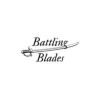Specialty lighting is reshaping diverse sectors by delivering customized, high-performance illumination solutions tailored for applications ranging from medical facilities and entertainment venues to industrial inspection and architectural highlights. As demand for energy efficiency, precision, and smart integration grows, specialty lighting is emerging as a critical enabler of operational excellence and enhanced experiences in 2025 across the globe.
According to Straits Research, the global specialty lighting sector was valued at USD 7.77 billion in 2024 and is projected to grow from USD 8.32 billion in 2025 to reach USD 14.44 billion by 2033, expanding at a compound annual growth rate (CAGR) of 7.13% during the forecast period (2025–2033).
Key Trends Shaping Specialty Lighting in 2025
-
LED Dominance and Phosphor-on-Chip Technology: LED lighting continues as the favored illumination source due to its energy efficiency, longevity, and customizable output. Breakthroughs such as phosphor-on-chip technology enhance brightness and color rendering while ensuring consistent beam quality, facilitating applications in architectural, portable, and automotive lighting.
-
Wired Lighting for Reliability: Wired specialty lighting systems retain significant usage, particularly where dependable, continuous operation is necessary—hospitals, manufacturing floors, and critical infrastructure. These systems support advanced control protocols for precise intensity and color tuning, integrating seamlessly with building automation platforms.
-
Smart and Connected Lighting: IoT-enabled specialty lights now feature sensor integration and remote programmability, offering dynamic control over lighting intensity, color temperature, and energy consumption. Networked solutions allow centralized management and real-time energy monitoring, meeting sustainability goals while enhancing user comfort.
-
Tunable and Dynamic Lighting: Adjustable beam angles, color temperatures, and spectral outputs are increasingly adopted in retail, galleries, healthcare, and entertainment sectors. These adaptive lighting solutions improve ambiance, patient comfort, and product visibility, creating immersive and functional environments.
-
Growth in Medical and Industrial Applications: Medical specialty lighting commands a substantial segment share, driven by needs for high color accuracy, minimal heat emission, and sterilizable designs for surgical and examination rooms. Industrial lighting innovations focus on precision beam fixtures with narrow, high-CRI outputs used in quality control and inspection processes.
Regional Developments and Leading Players
-
United States: The US specialty lighting landscape is led by innovators such as Luminus Devices Inc., which recently launched high-power LEDs with enhanced beam uniformity ideal for architectural and portable lighting applications. Firms here push integration of AI-driven control and IoT connectivity to drive smart lighting adoption, supported by growing commercial construction and healthcare infrastructure investments.
-
Germany and Europe: Germany’s HEIDENHAIN and firms such as Siemens hold strong positions with precision engineered specialty lighting solutions emphasizing reliability and compliance with EU energy and safety standards. Europe drives innovation around sustainability, incorporating energy-efficient LEDs and lighting management systems in building projects.
-
China: Rapid industrialization and growing retail and healthcare sectors fuel demand for specialty lighting. Companies like SICK innovate in compact magnetic and optical sensors applied in industrial illumination and smart lighting networks. The government's emphasis on urban infrastructure modernization supports ongoing growth.
-
India: Supported by rising urbanization and expanding commercial facilities, India is witnessing increased deployment of affordable and multi-functional specialty lighting products tailored for diverse climates. Local manufacturers are gaining ground, offering competitive solutions aligned with Make in India initiatives.
-
Japan and South Korea: Precision lighting for compact environments and high-tech applications such as electronics manufacturing and healthcare is a specialty of regional players like Panasonic and Samsung Electronics. These firms focus on miniaturization, enhanced color rendering, and IoT-enabled lighting controls.
Impact of Global Tariffs on Specialty Lighting Industry
Since 2024, tariffs imposed primarily between the US, China, and select other economies on electronic components such as semiconductors, LED chips, and sensor devices have introduced supply chain challenges for specialty lighting manufacturers. These tariffs have resulted in increased raw material and production costs, leading companies to diversify sourcing strategies and explore domestic manufacturing to mitigate dependency risks. Governments in North America and Europe have instigated incentives aimed at promoting localized production of crucial electronic parts. Despite short-term inflationary pressures, these adjustments have accelerated supply chain resiliency and profitability through innovation in material efficiency and supply partnerships.
Recent Industry News and Highlights
-
In early 2025, Luminus Devices Inc. introduced the SST-12 high-power LED emitting a round beam with superior spot uniformity and enhanced color accuracy, targeted at architectural and portable lighting applications.
-
Ecovacs Robotics expanded its product lines integrating specialty lighting systems optimized for smart home and robotic applications, enhancing multi-purpose illumination capabilities.
-
Europe saw increased installation of intelligent lighting in office and hospitality sectors featuring occupancy-based dimming and daylight harvesting systems to reduce energy consumption.
-
A surge in the use of tunable white and color-adjustable lighting in retail environments has helped brands create immersive, visually dynamic shopping experiences.
-
Expansion of wireless control systems and IoT-based energy monitoring platforms in specialty lighting products provide operators with enhanced operational control and sustainability metrics.
Outlook and Future Directions
The specialty lighting sector is on a growth path driven by continued LED innovation, smart integration with IoT ecosystems, and expanding applications across commercial, healthcare, entertainment, and industrial segments. Demand for customizable, energy-efficient, and high-performance lighting solutions will accelerate adoption globally. Emerging innovations in phosphor materials, beam shaping technologies, and AI-powered lighting management are set to redefine lighting experiences further. Geographic diversification with manufacturing localization will reduce tariff-related risks, enhancing supply chain robustness. Increasing focus on sustainable lighting combined with enhanced user-centric design will shape the future of specialty lighting worldwide.
Summary
Specialty lighting is advancing rapidly, fueled by LED innovations, smart connectivity, and expanding niche applications—from healthcare to industrial inspection. While global tariffs pose supply challenges, manufacturers are innovating supply chains and product designs to sustain growth. The future promises adaptive, energy-efficient specialty lighting solutions that optimize performance and user experience worldwide.





Top comments (0)